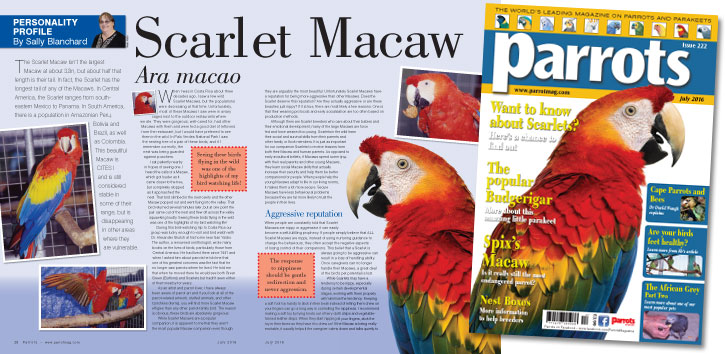
Personality Profile by Sally Blanchard
The Scarlet Macaw isn’t the largest Macaw at about 32in, but about half that length is their tail. In fact, the Scarlet has the longest tail of any of the Macaws. In Central America, the Scarlet ranges from south-eastern Mexico to Panama. In South America, there is a population in Amazonian Peru, Bolivia and Brazil, as well as Colombia. This beautiful Macaw is CITES I and is still considered stable in some of their range, but is disappearing in other areas where they are vulnerable.
When I was in Costa Rica about three decades ago, I saw a few wild Scarlet Macaws, but the populations were decreasing at that time. Unfortunately, most of these Macaws I saw were in aviary cages next to the outdoor restaurants where we ate. They were gorgeous, well-cared for, had other Macaws with them and were fed a good diet of leftovers from the restaurant, but I would have preferred to see them in the wild. In Palo Verdes National Park I saw the nesting tree of a pair of these birds, and if I remember correctly, the nest was being guarded against poachers.
Buy Now!








Parrot Chat
Buyers Guides
Breeding articles